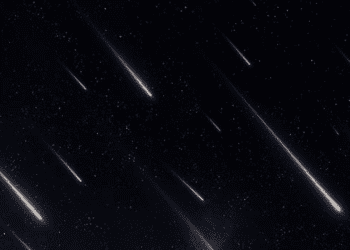A HUGE crater dubbed the “Gate to Hell” which belches prehistoric gas is expanding rapidly by a million cubic meters each year.
A new study has revealed that the Batagai crater in Siberia is stretching out at an alarmingly fast rate.




The Batagai was discovered in 1991 after satellite images revealed the tadpole-shaped megaslump.
Locals in the remote Yakutia region see the spectacular crater as superstitious, and named it the “gateway to the underworld”.
The enormous crater is a portal to a 200,000-year-old world which stores remains of ancient mammoth, musk ox and even a 40,000-year-old horse.
The three month old dark brown foal dating from the Palaeolithic era was found perfectly preserved inside the Siberian hollow.
The 200-acre wide and 300-foot deep pit was formed after a slope collapsed in the Yana highlands in northern Yakutia, Russia.
The collapse exposed the hillside to layers of 650,000-year-old permafrost which releases tons of methane as it melts.
The melting frozen ground has led the gigantic crater to sink and extend by 35 million cubic meters, according to the researchers.
Glaciologist Alexander Kizyakov and his colleagues published their discovery this month in the journal of Geomorphology.
The study also found that the crater now spews out between 4,000 and 5,000 tons of methane and other carbon gases per year.
According to Kizyakov, the findings “demonstrate how quickly permafrost degradation occurs.”
He added that the Batagai's expansion will continue until it reaches its topographical limit.
The slumps will likely keep pushing forward until all of it hits the bedrock.
Kizyakov told Atlas Obscura: “Expansion along the margins and upslope is expected.
“This lateral expansion is also limited by the proximity of bedrock, the top of which apparently rises to the saddle between the nearest mountains about 550 meters. [1805 feet] uphill.”
He has also warned that the Batagai could soon leak all of the remaining gas it has left.
The researchers already knew the crater was growing, but for the first time they were able to quantify the volume of melt flowing from the crater using satellite imagery, field measurements and laboratory testing data on samples from Batagai.
The data helped scientists create a 3D model which predicts the melting of the permafrost and helps them identify what will be released.
A previous study has revealed that along with its ominous release of greenhouse gas, the stratified layers of the crater's sides are releasing immense historical climate data.
Preserved among the melting permafrost are layers of pollen revealing it was once covered by open tundra.
But there are also two prominent bands of tree stumps, showing the land was covered in dense forest.
While offering a view to the past of the Siberian taiga, scientists believe the data can paint the picture of the future of the area.
Professor Julian Murton, a geologist at the University of Sussex, previously explained to The Independent that Batagai will “provide a view to what has happened in the past and what is likely to happen in the future.”
He added: “We will get increasing thaw of the permafrost and increasing development of these 'thermokarst' features. There will be more slumps and more gullying, more erosion of the land surface.”

The Batagai is growing due to 650,000-year-old permafrost melting[/caption]

The crater is expected to continue growing until it hits a bedrock[/caption]Source































